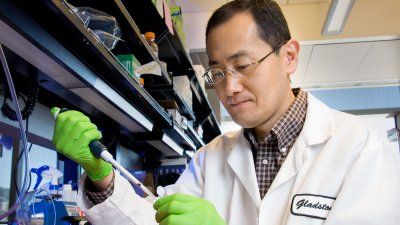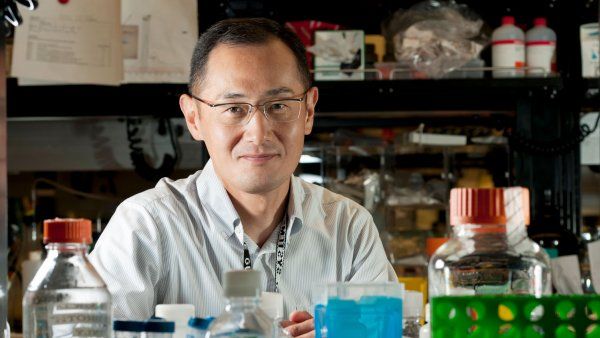University of California San Francisco
Give to UCSFProtein Deficiency in Brain Plays Key Role in Early-Onset Dementia
Scientists at the UCSF-affiliated Gladstone Institutes have discovered how a protein deficiency may be linked to frontotemporal dementia (FTD) — a form of early-onset dementia similar to Alzheimer’s disease. These results lay the foundation for therapies that one day may benefit those who suffer from this and related brain diseases.

UCSF Milestones in Stem Cell Science
<p>Since 1981, when UCSF’s Gail Martin, PhD, co-discovered embryonic stem cells in mice and coined the term embryonic stem cell, UCSF has been a key player in the stem cell field. Today, Shinya Yamanaka became the fifth UCSF scientist to win the Nobel Prize.</p>

Shinya Yamanaka Wins 2012 Nobel Prize in Medicine
<p>Shinya Yamanaka, MD, PhD, a senior investigator at the Gladstone Institutes and a professor of anatomy at UCSF, has won the 2012 Nobel Prize in Physiology or Medicine for his discovery of how to transform ordinary adult skin cells into cells that are capable of developing into any cell in the human body.</p>

Gladstone Media Resources
<p>Gladstone and UCSF leaders will participate in a Nobel Prize press conference at the Gladstone Institute at 8:30 a.m. Pacific Time (PT). Shinya Yamanaka will join via videoconference from Japan.</p>

Frequently Asked Questions About Stem Cell Science
<p>Here are answers to frequently asked questions about induced pluripotent stem cells, or iPS cells, the type of cell that has been reprogrammed from an adult cell, such as a skin or blood cell.</p>

Shinya Yamanaka's Road to the 2012 Nobel Prize in Medicine
<p>Stem cell scientist Shinya Yamanaka, MD, PhD, gained international acclaim in 2006 when he developed the method for inducing skin cells from mice into becoming like pluripotent stem cells and called them iPS cells. Here's a look at his road to the 2012 Nobel Prize in Medicine.</p>
